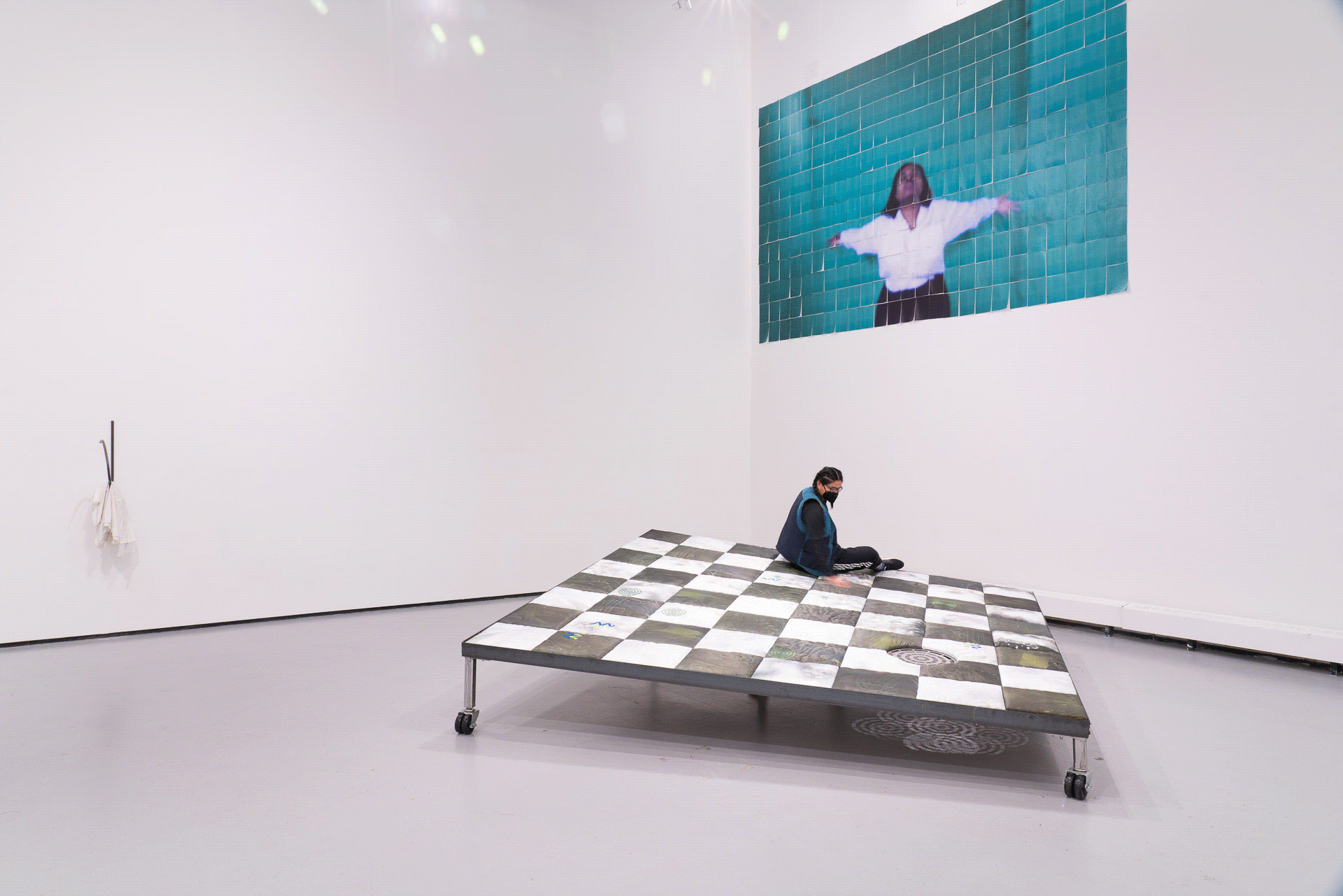Leeches hold a picture of our abundance. A leech can live for a year off a single bite; and, except for a little bleeding, we would not be any wiser or worse for the wear. By siphoning off a moment of our body’s circular operations, a leech externalizes the growth these patterns feed. This exhibition extracts transfusions out of ongoing processes, the faith that in this moment of culmination nothing ever really ends. Here the surprise and discomfort of an unstable relationship to the environment breeds hybrid forms, grown out of our strange reality into even more uncharted space.
The shared lifeblood of the title turns me to the necessity of fluidity. We have to be a little shapeless to be of use to each other. These amorphous, undefined borders offer a vision, a sense of the growth we do but are so often forbidden from inhabiting. In a world that demands self-assuredness and independence, these pieces boast a riverish tendency away from containment toward a wider horizon of collective becoming. Keep an eye out for moments that leak, drip, smear, ripple, and tear across their content. From vessels that carry sugar water in Audrey Ryan’s Stamped Upon, to the fragrant emulsions in Diana Sofia Lozano’s installation, to the blue lines that excrete from Cameron Clayborn’s brown cushioncontainercapsules, these works powerfully embody the ability to resist stasis, to build a release for ongoing becoming out of a calcified moment. In this liquefied sense of time we can feel motion’s discreet disruptions of form, its shape shifting around skin as the visual slips into the haptic.
By turns generous and reticent, the works on display drift beyond their materiality, punctured by their relationships to the artists. Amina Ross shared the labor of quilting with their grandmother, and Kevin Hernández Rosa gathered splinters from the remnants of a speaker jointly destroyed in a moment of synergistic catharsis. The materials have strayed and determined their own trajectories in unique ways. These entanglements and their reincarnations condition the vibrancy encountered in the work.1 To acknowledge endlessness is to resist resolution, even if what remains unsolved is ourselves. If “the struggle for a culture of critique and possibility is now inseparable from the economic struggle to retrieve real abundance from the illusion of scarcity,” then it it clings like a leech finds real abundance in refusing hierarchization and completion in the world of objects and their assumed boundaries.2
To embody the ethos of it clings like a leech, the online exhibition features an ongoing exchange between artists and writers. It coalesces texts that slip and spill into each of the accompanying thesis works to engender additional sites for observation, engagement, reflection, and play. Conjured during confined times, it clings like a leech offers an experiment in alternative worldmaking – one that is cooperative, self-organized, and extra-institutional. Rather than enclosing the work in description, these intertextual dialogues invite participants to collaborate with their intimate, porous, and sticky interlocutors.
How will they latch onto us? Where do we carry what clings beyond the moment of contact, the residue of the exchange?
1 Jane Bennett works to “enhance receptivity to the impersonal life that surrounds and infuses us” and “generate a more subtle awareness of the complicated web of dissonant connections between bodies.” From her book, Vibrant Matter: A Political Ecology of Things (Durham: Duke University Press, 2009) 4.
2 David Lloyd, “The Goal of the Revolution is the Elimination of Anxiety” in Critical Ethnic Studies (Durham: Duke University Press, 2016) 212.
